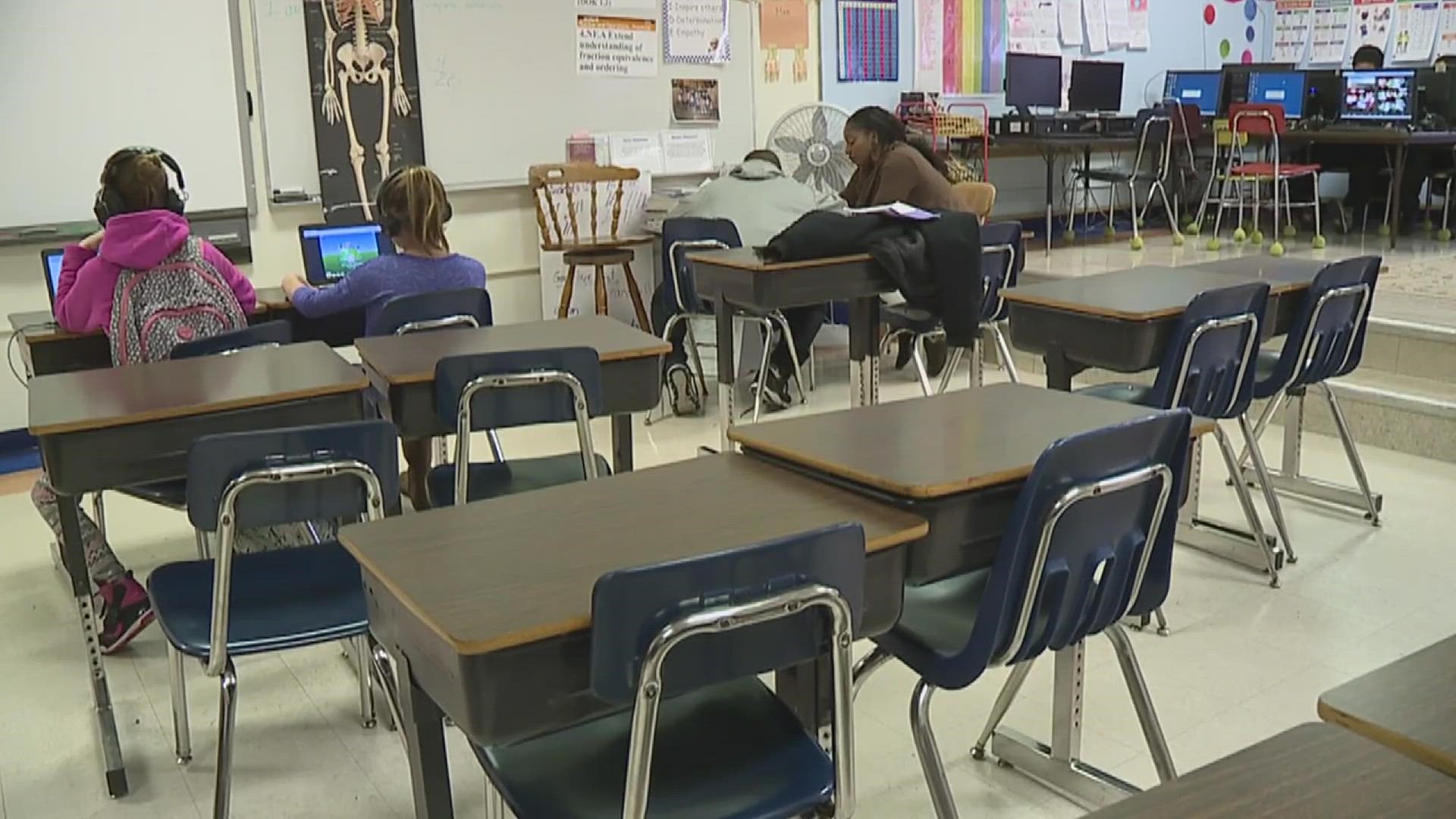DAVENPORT, Iowa — For the second time, people in Iowa got the chance to weigh in on a proposed school choice bill to lawmakers in Des Moines. The House Education Reform Committee held a hearing on the proposal, House Study Bill 1, Tuesday night, alternating between public comment in support and against the plan.
Governor Kim Reynolds announced the proposal in her Condition of the State speech. It would create a taxpayer-funded Education Savings Account to help students and families pay for private school.
Reynolds proposed making $7,598 available for each student to pay for tuition, tutoring and other costs associated with attending a private school. It's the same amount the state allocates for a student in public school. She envisions a three-year rollout that would initially focus on lower-income students, but after three years, the scholarship would be available to any student, regardless of income.
- YEAR ONE (2023-24 School Year)
- All kindergarten students
- All public school students
- Private school students at or below 300% of the Federal Poverty Level ($83,250 for a family of four)
- YEAR TWO (2024-25 School Year)
- All kindergarten students
- All public school students
- Private school students at or below 400% of Federal Poverty Level ($111,000 for a family of four)
- YEAR THREE (2025-26 School Year)
- All K-12 Students (regardless of income)
This is the third time Reynolds has proposed a private school voucher plan and it's a more expansive program of taxpayer-funded scholarships for private schools. In 2022, it limited scholarships to 10,000 students below certain income requirements, but the bill never made it out of the Iowa House.
Opponents of the plan say it diverts money that could be spent on public schools.
"It's really a sad day in Iowa to see that we are now funding, at such a high level, private education, which is only available for a few," said Toby Paone, a representative from the Iowa State Education Association. "Public schools teach 90-95% of the students in Iowa. However, every dollar is precious, and we've see a woeful underfunding of public education in Iowa over the last 10 or 15 years."
He believes it will further divide the education kids can receive at public and private schools.
"The kids who are suffering the most in this scheme will be those who are already on the lower end of the socio-economic ladder, not kids at the top," Paone said. "It's a race to the bottom, unfortunately. Public schools will get poorer, they'll have a lot more difficult time coming up with the resources they need to educate children."
Julie Delaney, the principal at St. Paul the Apostle Catholic School in Davenport, said she doesn't see it as pitting public and private schools against each other, it just gives families more options.
"It allows families a choice to pick that school that's going to be the best education and give their children what they feel is needed," she said. "It's making it accessible to families, so the families who couldn't pay the tuition, with this ESA, now they can pay the tuition."
She added that it has more of a benefit to families than it does her school.
"We're K-8. We have two sections of kindergarten, two sections of first, we have no extra classrooms. So we really don't have a lot of room for new students to come in," Delaney said. "So something like this isn't going to build our school up a lot... Hopefully, I'd be able to fill (empty spots) without the ESA if we're doing a good job."
Opponents are worried that public schools will lose money because they get a share of state funding based on enrollment. To offset this, Reynolds' proposal says public school districts will retain an estimated $1,205 for every student who receives an Education Savings Account at a private school within the district's boundaries.
"A lot of school districts in Iowa have no private schools within their boundaries," Paone said. "There's over 300, about 333 public school districts across the entire state, and over half of them have no private schools within their boundaries. So if you lose funding at the state level for private education and have no opportunity to get money back, you've lost it all. And so that's one of the real drawbacks of this bill."
There's no cap on how many ESAs the state will fund. The scholarships will be made available until there are no longer spots open in Iowa private schools.
The governor's office estimates it will cost the state roughly $106.9 million for the first year and $313.9 million for the third year.
Watch more news, weather and sports on News 8's YouTube channel

